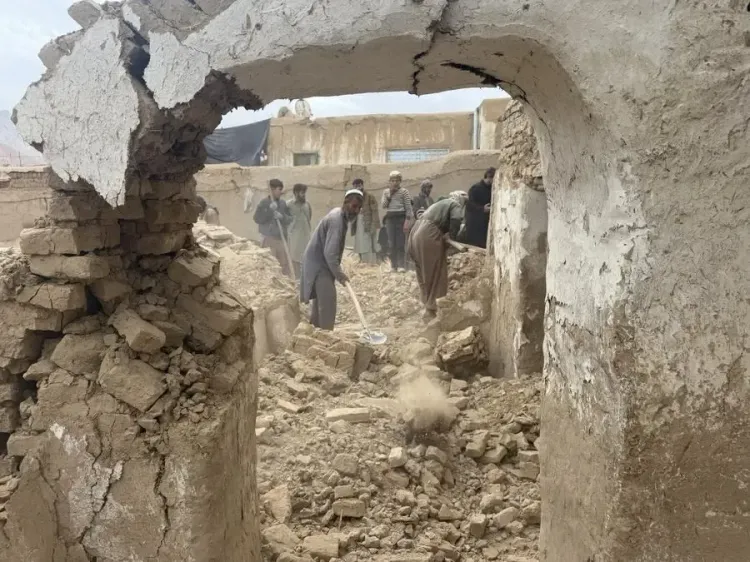How is the UN Responding to the Recent Earthquake in Afghanistan?

Synopsis
Key Takeaways
- UN and partners are responding to the Afghan earthquake.
- 25 fatalities and nearly 1,000 injuries reported.
- Immediate needs include emergency shelter and medical supplies.
- The earthquake registered a magnitude of 6.3.
- International community urged to support Afghanistan.
United Nations, Nov 7 (NationPress) - In the wake of the devastating earthquake that hit northern Afghanistan earlier this week, the United Nations and its partners are ramping up their humanitarian efforts, as shared by Farhan Haq, the deputy spokesperson for the UN Secretary-General.
During a press briefing on Thursday, Haq reported that local authorities have confirmed that 25 lives have been lost and nearly 1,000 individuals have sustained injuries due to the earthquake on Monday. He also mentioned that assessments conducted by the UN indicate that approximately 800 homes have been damaged.
Immediate actions include providing emergency shelter, warm clothing, financial aid for heating, and repair kits for the afflicted households. Furthermore, there is an acute requirement for enhanced health support, especially mobile clinics, trauma care in remote areas, and increased ambulance services.
The UN and its partners are actively delivering assistance on the ground. The International Organization for Migration is supplying tents, emergency shelter kits, and blankets. The UN Children's Fund, alongside its partners, is distributing clothing and hygiene kits, while the World Food Programme is providing food packages, including high-energy biscuits, as reported by Xinhua news agency.
On the health front, the World Health Organization and its partners have dispatched emergency medical supplies and are aiding local authorities in service delivery and coordination, Haq added.
"The UN continues to urge Member States to lend support to the Afghan populace in addressing their humanitarian needs. The $2.4 billion Humanitarian Needs and Response Plan remains only 35% funded, with $857 million received so far," he stated.
The earthquake's epicenter was identified in the Khulm area, registering a magnitude of 6.3 at a depth of 28 kilometers. The provinces affected include Balkh, Samangan, Kunduz, Sar-e-Pul, and Jawzjan.
In response to the disaster, the Afghan government has initiated rescue operations.
Rescue teams have successfully cleared and reopened several major roads, aiding residents who were previously trapped.
Officials from Badakhshan province reported that around 800 houses were impacted by the earthquake.
Additionally, the historic Blue Mosque in Mazar-i-Sharif suffered damage, with sections of its structure peeling away. Established in the 12th century, this mosque is a significant religious and cultural landmark in northern Afghanistan.









